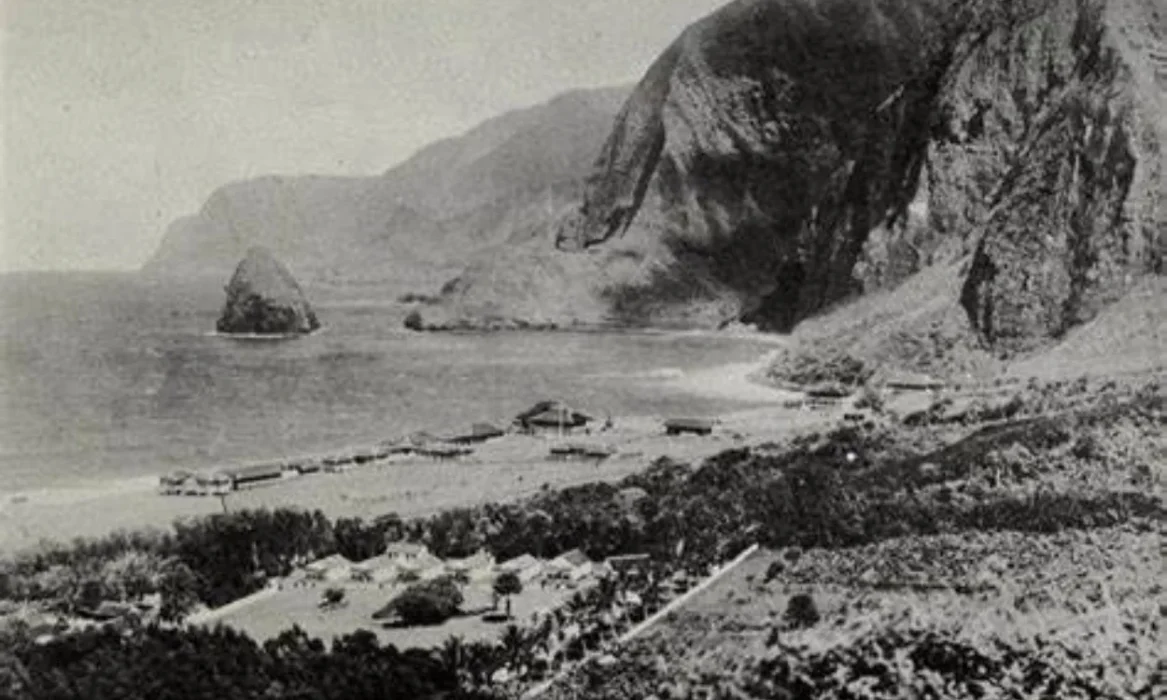Epidemiologists—or those who study diseases— claim it is the oldest affliction
in human history. Social scientists believe this disease has carried with it the
longest and most malingering social stigma known to human behavior. Religious
scholars have interpreted this curse as an extended metaphor between good and
evil. The disease that we call leprosy has a long and misunderstood legacy.
Interestingly, the role Belgium has played in this narrative concerning is significant
and ongoing. Consider…
The word leprosy is believed to be derived from the Greek words: lepros (scaly
man) and lepin (to peel). The Romans called it “elephantiasis graecorum”—
suggesting an enlargement or loss of body parts. The malady is an insideous
infection by bacteria that can lead to tissue loss, nerve and respiratory damage,
and deformities.
Archeologists have gleaned from burial remains that the skin disease can be
traced back to circa 600 B.C. Some of the earliest written accounts date back to
the Bible. The Old Testament mentioned the disease over 50 times. It was
perceived as “unclean and a punishment for sin.” For those stricken, it was
believed to be a powerful result of the debilitating influence of sin in a person’s
life. The leper shall “live alone outside of the camp” noted Leviticus. In the New
Testament however Jesus interacts with the leapers (The Story of the Lepers)
challenging the social norms of the era. By interacting with the leapers, Jesus
touched and healed those afflicted restoring their dignity and place in society.
This demonstration of compassion , not scorn, was revolutionary.
In Europe, the first written accounts of leprosy refer to “ leper colonies” in
and around what is now Belgium. These colonies —replete with formal
restrictions and a lingering stigma, are first documented in the area of Verdun and
Ypres as early as 634 A.D. The area of modern-day Belgium was believed to have
700-800 leper colonies. These communities were built on the edge of settlements
and excluded those afflicted from everyday society. To be assigned to a leper
colony meant a life sentence of social isolation.
Over the course of the Middle Ages, attitudes towards leprosy began to change
(albeit slowly) but for different reasons. Leper colonies—isolated and
stigmatized—began to take on political, rather than medical implications.
Accounts suggest that the houses started to serve as detention centers for those
whom local elites deemed to be political enemies or trouble makers.
Many, especially in what is now Wallonia, were falsely accused of contracting leprosy and subsequently incarcerated. The leper colonies were used by those in power to help secure their political, cultural, and economic dominance.
Much like the Old and New Testament perceptions of the disease contrasted
each other, it was a Belgian—a Catholic priest from rural Flanders—who brought
change to the attitudes towards leprosy. Meet Father Damien…

Jozef De Veuster —later known as Father Damien — was born (1840) in
Tremelo, Brabant Province, Belgium. He became a missionary priest assigned in
1865 to the Catholic Mission on the Kalaupapa Peninsula, in what was then The
Kingdom of Hawaii. There he found a public health crisis. Many native Hawaiians
had high mortality rates from infectious diseases such as smallpox, cholera,
influenza, syphilis, and whooping cough. These diseases were believed to have
been brought to the islands by foreign traders. Native Hawaiians, with no natural
immunities, suffered exponentially. It was leprosy however that caused the most
serious cases. At the time leprosy was thought to be contagious and incurable,
and worthy of isolation and scorn.
For 16 years Father Damien cared for the spiritual, physical, and emotional needs of the lepers of Kalaupapa. This was no small feat as more than 8,000 people were sent to Hawaiian leper colonies. He helped build houses, schools, roads, hospitals, and churches. He oversaw the building of a reservoir, dressed wounds, made coffins, dug graves, spoke in the local dialect, and embraced the local culture.
Inarguably Father Damien’s sacrifice was a catalyst for the– turning point in
dispelling the myths surrounding leprosy. His work did not go unnoticed
internationally. By 1873 the bacteria that caused leprosy was discovered by
Norwegian G.H.A. Hansen. What followed were more effective treatments, new
therapies, successful medications, that addressed the malady. For example, it was
found that leprosy was not contagious and that 90% of the human population was
naturally immune.
In 1889 Scottish author Robert Louis Steveson ( think: Treasure
Island and Dr. Jekyll and Mr. Hyde) arrived in Hawaii for an extended stay due to
his tuberculosis diagnosis. While on the island he learned of Damien’s work and in
his subsequent writings, Stevenson praised Damien as “essentially heroic alive
with rugged honesty.” Mahatma Gandhi said that Father Damien’s work inspired
his social campaigns in India.
It is the example of Father Damien and those who followed that we must look to for sources of heroism,
said Gandhi. In 1977 Pope Paul VI beatified Damien in the Basilica of the Sacred Heart in Brussels. By 2009 Pope Benedict XVI canonized Father Damien in a Vatican City ceremony, naming him the Patron Saint for Leprosy and Outcasts.
Father Damien’s contributions to the cause of leprosy certainly were pivotal
in bringing international awareness to the malady. But it was a humble priest
from Brabart, Belgium who, more than anyone else, helped change the
entrenched attitudes towards leprosy.
DID YOU KNOW?
— In 1989 the world’s most famous woman, Princess Diana, made global
headlines during a visit to the Sitanala Leprosy Hospital in Indonesia. She made a
point to demonstrably touch patients affected with leprosy. Hospital staff
working said this visit had an unqualified ripple effect in the public seeing past
the stigma and misinformation associated with leprosy.
—Statues of Father Damien can be found in many Belgian churches such as the
Tournai Cathedral, St. Bevo’s Cathedral in Ghent, and the St. Martin’s Cathedral in
Ypres. In Tremolo, Brabart the Damien Museum is housed in his birthplace.
— On Father Damien’s canonization, President Barack Obama declared that
“we should draw on the example of Father Damien’s resolve in answering the urgent
call to heal and care for the sick—especially in our own time of the pandemic of
HIV/AIDS.”
Hawaii is Barack Obama’s home state.
Dear reader,
Opinions expressed in the op-ed section are solely those of the individual author and do not represent the official stance of our newspaper. We believe in providing a platform for a wide range of voices and perspectives, even those that may challenge or differ from our own. We remain committed to providing our readers with high-quality, fair, and balanced journalism. Thank you for your continued support.



